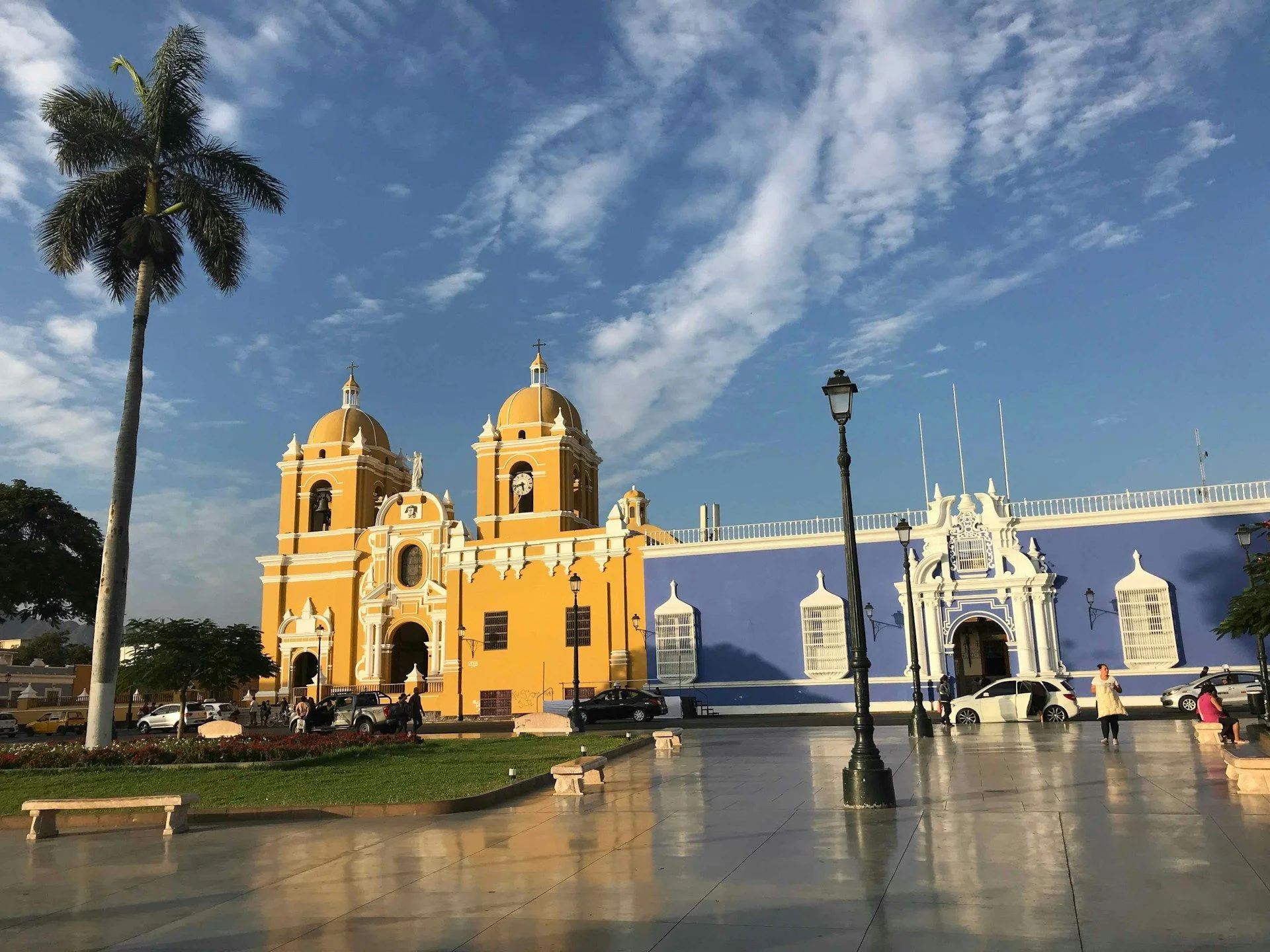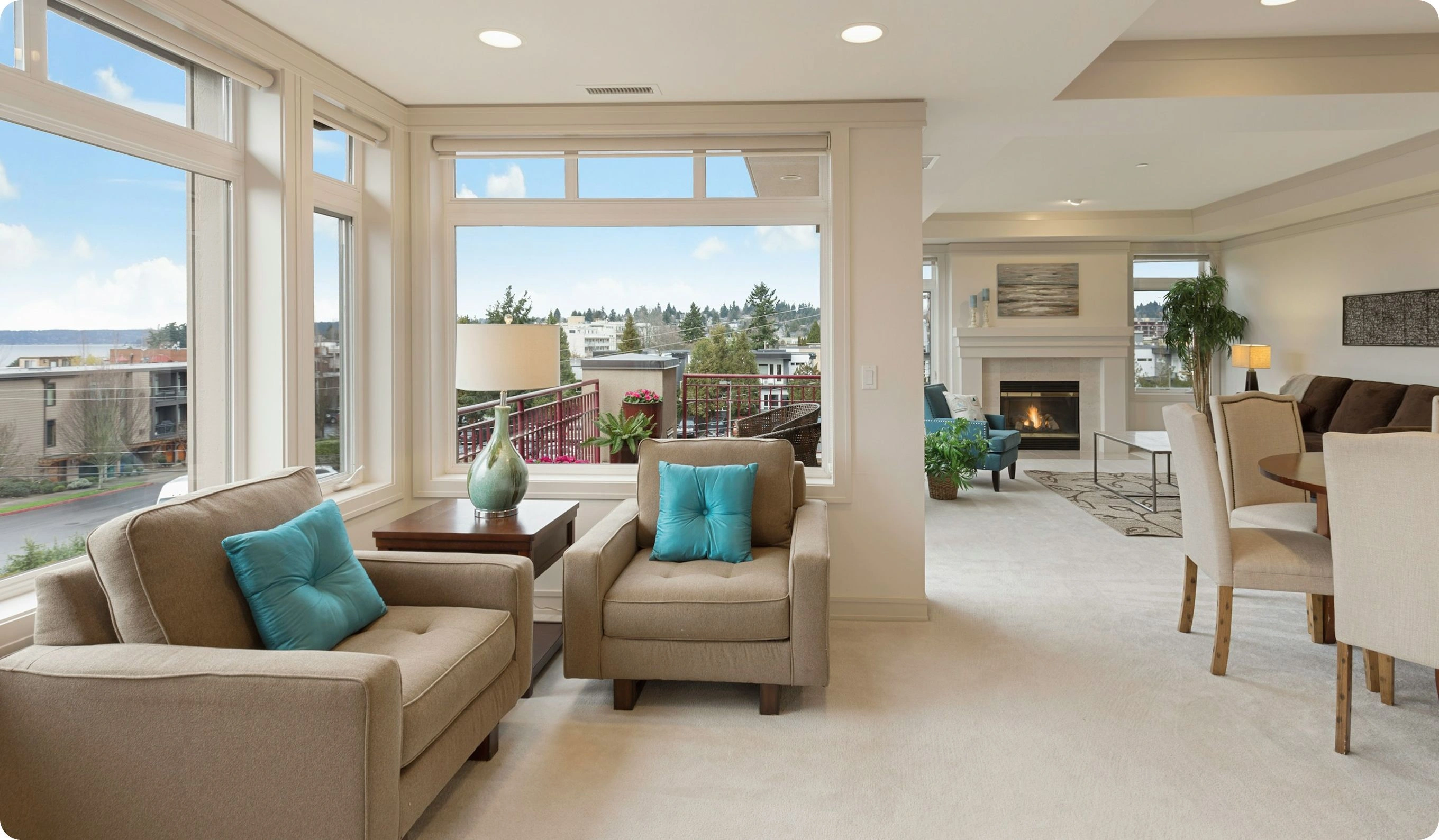Secure Pre-Owned Homes in TrujilloHistoric streets, universities andstable investments

بهترین پیشنهادات
در ترخیلو
مزایای سرمایه گذاری در
املاک و مستغلات پرو

راهنمای سرمایه گذاران در بخش املاک و مستغلات در پرو
برای مطالعه بیشتر اینجا را بخوانید
پایتخت پرو همچنان توسعه دهندگان، متخصصان و شرکتهای بینالمللی را جذب میکند و این امر باعث افزایش تقاضا برای مسکنهای نوین میشود.
املاک و مستغلات همچنان با قیمتهای رقابتی، بهویژه در مناطق نوظهور با زیرساختها و امکانات در حال بهبودی، ارائه میشود.
رشد شهری و نوسازی در لیما
خارجیها میتوانند بدون هیچ گونه محدودیت خاصی مالکیت املاک را در اختیار داشته باشند و فرآیند خرید تحت حمایت قوانین ملی قرار دارد.
ورود مقرون به صرفه همراه با پتانسیل رشد
بیشتر بخوانید
مسیر قانونی established برای مالکیت املاک
املاک و مستغلات همچنان با قیمتهای رقابتی، بهویژه در مناطق نوظهور با زیرساختها و امکانات در حال بهبودی، ارائه میشود.
رشد شهری و نوسازی در لیما
خارجیها میتوانند بدون هیچ گونه محدودیت خاصی مالکیت املاک را در اختیار داشته باشند و فرآیند خرید تحت حمایت قوانین ملی قرار دارد.
ورود مقرون به صرفه همراه با پتانسیل رشد
بیشتر بخوانید
مسیر قانونی established برای مالکیت املاک

مقالات مفید
و توصیههایی از متخصصان
Main title about secondary real estate in Trujillo
Why secondary properties attract buyers
Secondary real estate in Trujillo gives buyers immediate access to fully commissioned urban and coastal homes in one of northern Peru’s most dynamic city-regions. Instead of waiting through multi-quarter construction cycles and finish variability typical of new projects, purchasers step directly into functioning apartments, townhouses and single-family homes situated in walkable historic streets, master-planned residential grids and beach-adjacent districts. This readiness compresses time-to-occupancy for end-users and time-to-income for landlords, while minimizing execution risk and the variance between underwriting and actual performance. In the resale segment, pricing is anchored by tangible attributes—orientation, cross-ventilation, acoustic exposure, daylight quality, circulation logic, parking and building-management standards—rather than brochure promises.
Trujillo’s fundamentals are unusually balanced. The colonial centre around the Plaza de Armas concentrates culture, administration and hospitality; modern neighborhoods such as El Golf, California and San Andrés provide lift-served buildings, underground parking and green pockets; and the coastal belt led by Huanchaco adds a beach lifestyle and robust holiday-let demand. Business activity across agro-exports, logistics and services sustains year-round tenancy independent of tourism cycles. For buyers who value practicality, this mosaic translates into robust tenant pipelines, clear comparables and predictable operating conditions.
Secondary properties here frequently incorporate targeted modernization completed by prior owners: upgraded electrical distribution with grounded circuits and modern breaker panels; pressure-regulated plumbing risers; energy-efficient glazing on noise-facing elevations; inverter HVAC or hybrid ventilation strategies suited to the coastal climate; LED lighting; and durable kitchen and bath finishes that tolerate humidity and heavy use. Because these interventions are already in place, buyers avoid the early-life capex and downtime that can follow new-build handovers. For investors, the same specifications reduce service calls, elevate tenant satisfaction and support renewals—key levers for lifetime yield.
Established neighbourhoods
The city organizes into distinct yet complementary micro-markets. The Centro Histórico offers refurbished colonial-era apartments and townhouses with high ceilings, thick masonry and shaded galleries. Residents walk to cafés, museums, clinics and civic offices; landlords capture demand from professionals, visiting academics and culture-oriented travelers. Just south and east, San Andrés and California supply mid-rise condominiums with elevators, controlled access and underground parking, prized by families and long-stay corporate tenants for their calm streets and proximity to schools and supermarkets. Westward, Víctor Larco Herrera—including Vista Alegre—delivers a suburban feel within minutes of the core: wider pavements, parks and reliable services appeal to multi-year family leases.
El Golf remains a flagship residential zone with generous floor plates, balconies and amenity buildings that include gyms and pools. Specification standards, HOA governance and streetscape orderliness are generally higher here, supporting premium positioning and lower vacancy. Along the coast, Huanchaco mixes modern apartments, low-rise condos and renovated houses near the boardwalk. Its surfing culture and year-round appeal create resilient short-stay and shoulder-season demand that landlords can access with compliant operations and professional guest management. Toward the industrial and logistics corridors, townhouse clusters and compact apartments serve employees seeking predictable commutes. Across these settings, municipal basics—paved access, drainage, lighting, scheduled waste collection and public-realm upkeep—are dependable, which lowers operational surprises for owners.
Who buys secondary real estate
Demand is diversified, which enhances resilience. Local families use the resale market to upsize into formal housing near schools, healthcare and employment, favoring two- and three-bedroom layouts with lift access and secure parking. First-time buyers prioritize efficient one- and two-bedroom plans in transit-accessible blocks that minimize door-to-work times. Corporate transferees attached to agro-export, logistics and services lease furnished units in El Golf, California and San Andrés, valuing quiet exposure, broadband uptime and building management that handles parcels and maintenance promptly. Lifestyle purchasers acquire Centro Histórico pied-à-terre apartments for periodic stays that transition to compliant medium-term rentals when not in use. Coastal enthusiasts target Huanchaco for a dual-utility model—personal use during peak dates, professional holiday-lets the rest of the year.
Portfolio investors—local and diaspora—assemble clusters of compact units around university corridors, medical hubs and the coastal belt, optimizing for leasing velocity and low day-to-day maintenance. They favor buildings with documented reserve funds, transparent service-charge accounting and responsive administration. Across all buyer profiles, motivations converge on three pillars: immediate habitability, reliable civic networks and transparent operating costs. VelesClub Int. matches each brief to micro-locations, screening for sunlight, cross-breezes, acoustic levels, storage logic, lift reliability and HOA quality—practical details that determine whether a unit simply photographs well or truly lives well.
Market types and price ranges
Trujillo’s secondary inventory spans the full urban spectrum. Entry assets include studios and compact one-bedroom apartments in walk-ups or modest lift-served buildings close to the centre or trunk corridors, typically priced to reflect fabric condition, access and HOA governance. Core family stock—two- and three-bedroom apartments in mid-rises and attached townhouses—offers the best balance of space, budget and adjacency to schools, parks and supermarkets. Premium secondary options comprise refurbished colonial houses in Centro Histórico, high-floor condos with terraces in El Golf and ocean-view units or duplexes in Huanchaco. Pricing steps with orientation, balcony usability, acoustic treatment, envelope performance, parking convenience and the quality of building management.
Rather than chase headline rents, resilient strategies focus on defensible price-to-utility ratios: kitchens that cook comfortably, bathrooms that vent properly, closets and storage that keep circulation clear, and balconies that function for outdoor dining rather than mere decoration. Units that meet these tests experience fewer vacancy days and lower refresh costs between tenancies. VelesClub Int. underwrites conservatively, with expense reserves for HOA dues, building insurance, routine AC service where present, paint cycles, minor appliance replacement and prudent allocations for common-area capex. For portfolio scale, small multi-unit properties—four to eight doors—near university, medical and coastal corridors can deliver diversified cash flows and lower vacancy risk when professionally managed.
Legal process and protections
Peru’s conveyancing framework provides clear guardrails for secondary acquisitions. Transactions typically proceed from an agreed minuta (preliminary contract) to an escritura pública (public deed) executed before a notary, followed by registration at SUNARP, the national public registry. Legal due diligence confirms chain of title, verifies the absence of liens or encumbrances, matches cadastral descriptions to physical reality and checks municipal compliance. Buyers also review municipal tax status (property and transfer obligations) to ensure no arrears follow the asset post-closing. In condominiums, the homeowners’ association bylaws, meeting minutes, financial statements and reserve levels are assessed to understand governance quality, service standards and likely future contributions.
Technical due diligence proceeds in parallel. Inspectors assess structure, roofs and façades; test electrical safety (grounding, breaker sizing, outlet load); verify plumbing pressure and drainage; evaluate window sealing and moisture management; and review elevator maintenance and fire-safety systems where applicable. Where furniture and appliances are included, an inventory is attached to the contract. Funds transit through controlled accounts; at closing, the notary formalizes the deed and the registration perfects title against third parties. VelesClub Int. coordinates bilingual documentation where needed, aligns legal and technical streams, negotiates seller contributions for cure items and schedules key transfer and meter readings—so onboarding from offer to occupancy remains predictable.
Best areas for secondary market
Performance concentrates where mobility, services and lifestyle intersect. The Centro Histórico offers scarcity value, footfall and cultural cachet, supporting resilient pricing for well-specified units with quiet exposure and acoustic treatment. Blocks just beyond the core provide larger floor plates and easier car interface while preserving walkability—attractive to professionals and families seeking mid-term stability. El Golf balances premium amenity standards with proximity to commerce; high-floor units with terraces, cross-ventilation and lift reliability are favored by long-stay corporate tenants. California and San Andrés form dependable residential grids with schools, clinics and supermarkets; here, two- and three-bedroom plans with practical storage and shaded balconies command steady renewals.
Huanchaco supplies a differentiated coastal product: boardwalk access, cafés and water sports underpin short-stay and shoulder-season demand. Ocean-view apartments with efficient sound insulation, corrosion-resistant finishes and compliant operations can outperform in occupancy while maintaining controlled wear-and-tear. Further south and east, corridors aligned with logistics and industry serve workers who prioritize predictable commutes and budget discipline; compact units with durable interiors and rational service charges are the workhorses of these belts. Across all archetypes, assets outperform when they combine measured acoustic isolation, efficient climate strategies, reliable water pressure and storage solutions with HOA governance that is transparent and timely. VelesClub Int. applies a standardized scoring model—fabric condition, envelope, systems, daylight, noise exposure, circulation, micro-amenities and mobility—to rank streets and buildings, steering capital to pockets with the most supportive fundamentals.
Why choose secondary over new + VelesClub Int. support
Selecting a secondary property in Trujillo solves three core problems at once. First, it eliminates timeline risk: the asset exists, operates and can be occupied or rented shortly after closing. Second, it reduces specification uncertainty: acoustics, ventilation, water pressure, daylight and building-management responsiveness can be tested during diligence rather than inferred from renderings. Third, it optimizes capital allocation: instead of underwriting developer premiums and defect-liability periods, owners direct funds to targeted enhancements with clear comfort and rentability payoffs—balcony shading, window sealing, lighting layers, storage systems, water-pressure stabilization, smart locks and network improvements.
VelesClub Int. amplifies these structural advantages through end-to-end execution. Our sourcing prioritizes streets that live well, not just photograph well; valuations reference live lease comparables rather than aspirational listings; and underwriting assumes conservative expense ratios, realistic vacancy and periodic plant renewal. Legal and technical teams coordinate document collection, registry verification and contractor quotes for any remedial works, negotiating seller participation where appropriate. Post-closing, our operations desk handles tenant placement, preventive maintenance, service-charge reconciliation and performance dashboards that consolidate occupancy, arrears, work orders, capex and benchmarks—enabling owners to make timely adjustments without day-to-day oversight.
For lifestyle buyers, Trujillo’s secondary market offers colonial charm, coastal leisure and metropolitan convenience in one package. For yield-focused investors, it offers defensible mid–single-digit to high–single-digit net returns built on diversified tenant pools and proven neighborhoods. Either way, disciplined selection—by bay, block, building and floor plan—translates into quiet compounding: stable cash flow today, protected capital value tomorrow and credible exit options when strategy or life plans evolve. With VelesClub Int. as your partner, every step—from first shortlist to first rent check—is mapped, measured and managed.